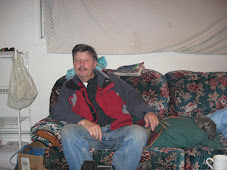Thursday, January 10, 2008
THE_ crime of lying under oath= PERURE
The Perjure at trial were : Heather lee Pugh,
John,S.Raymond, and one of my owned Expert
Qualifications of my accounted Mr. Gerald Withers. = Trial Division Exhibit List. A-6 the point here is must be Qualified to lie, and miss lead the Judge at Trial:
Richard Harris must start a Personal Injury Litigation" Because there will be no relief at the Appeal court on February 13,2008, at 10.am for Richard Harris Life work up to February 12/1997, the first time that i would have any ID of the Property requirement of what they D.O.T. would need from me.???
will the police Investigations in to this Matter of PERJURY.???
The Law Society did not do a thing about the Conflict of interest of MRDC law firm,
going to the Ombudsman was a wast of time and Money.
Going to the The New Brunswick Association of Real Estate Appraisers was a wast of time and money, fighting for my life from February 12/1997 up to this day January 11/2008 was a com pleat wast of a life.?
If i could do life over and know what i know now ! i would of just gave the property away.
Posted: Wednesday, December 17, 2003
|
The Supreme Court of Canada in Odhavji Estate v. Woodhouse, 2003 SCC 69, has detailed the requirements for the tort of "misfeasance in a public office", an intentional tort in which a public officer deliberately fails to exercise a public function, knowing that his or her conduct is unlawful and likely to injure the plaintiff.
An
An
The estate and family of the deceased brought actions against the officers and the police chief for misfeasance in a public office, and actions for negligence against the chief, the police board, and the province.
The motions judge and the Court of appeal struck out portions of the claims.
The palintiffs appealed the Court of Appeals decision to strike the claims for misfeasance in a public office against the officers and the chief, and the claims for negligence against the board and the province.
The chief cross-appealed the Court of Appeal's decision to let the action against him for negligence to go forward.
The Supreme Court of Canada held that the actions in misfeasance against the officers and the chief, as well as the action in negligence against the chief could proceed.
The Court struck the actions in negligence against the board and the province.
The Court ruled that misfeasance in a public office:
can include a public officer's failure to perform a statutory duty, but is not limited to unlawful exercises of statutory powers;
is an intentional tort that includes
deliberate, unlawful conduct in exercising public functions; and
awareness that the conduct is unlawful and likely to injury the plaintiff;
must include the requirements common to all torts—that the tortious conduct was the legal cause of the plaintiff's injuries, and the injuries are compensable in tort law.










No comments:
Post a Comment